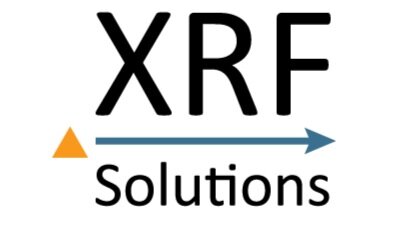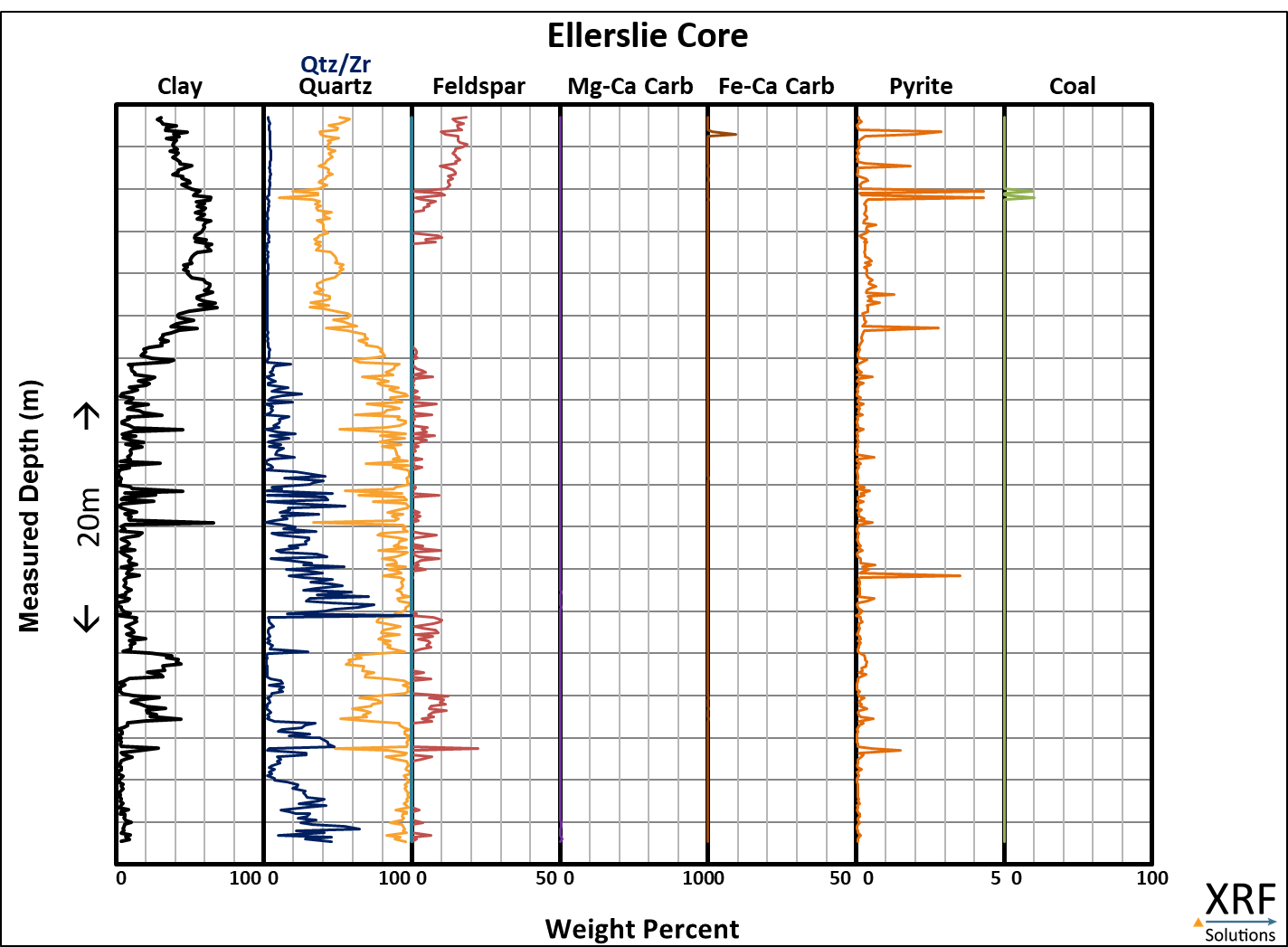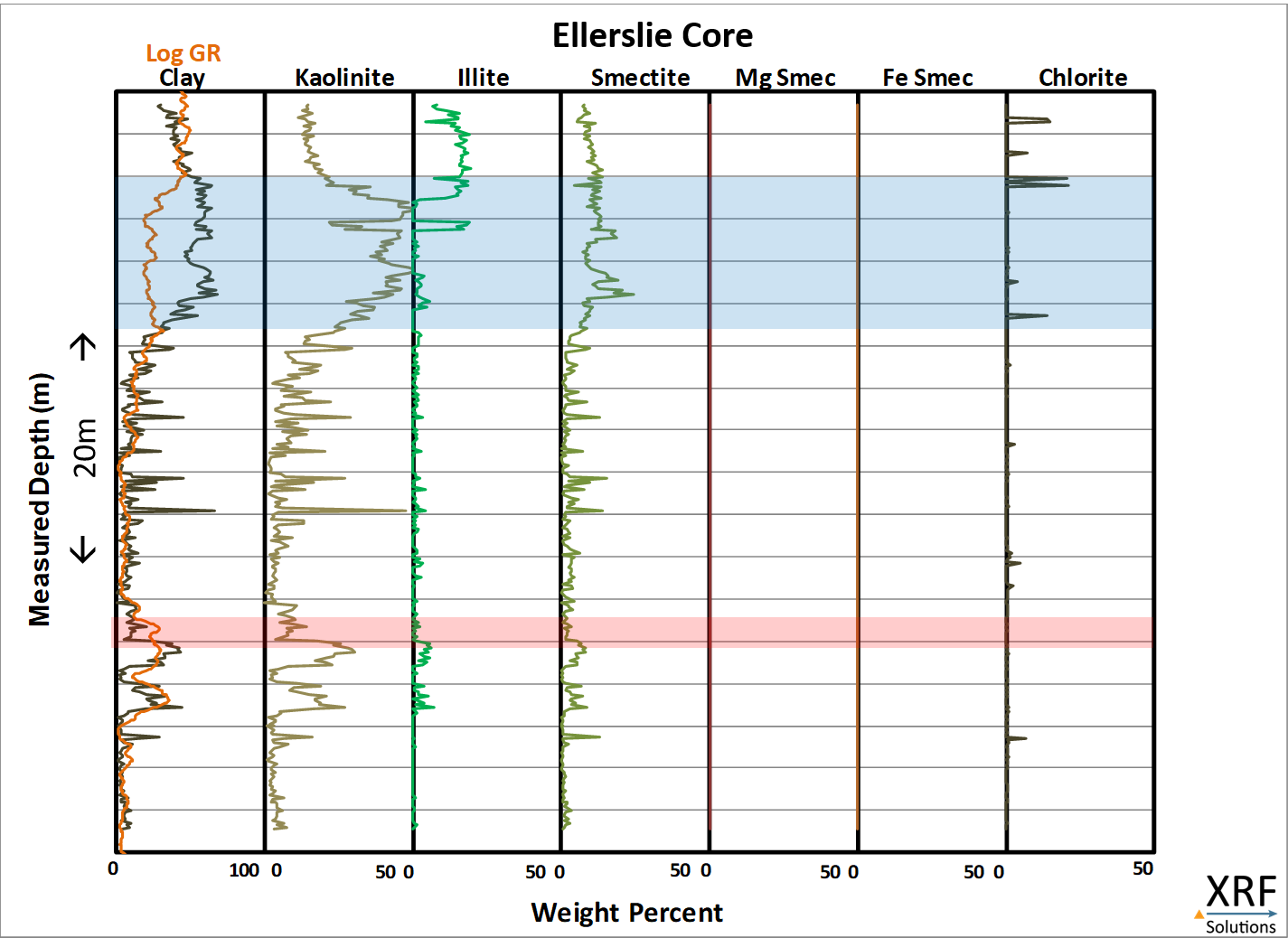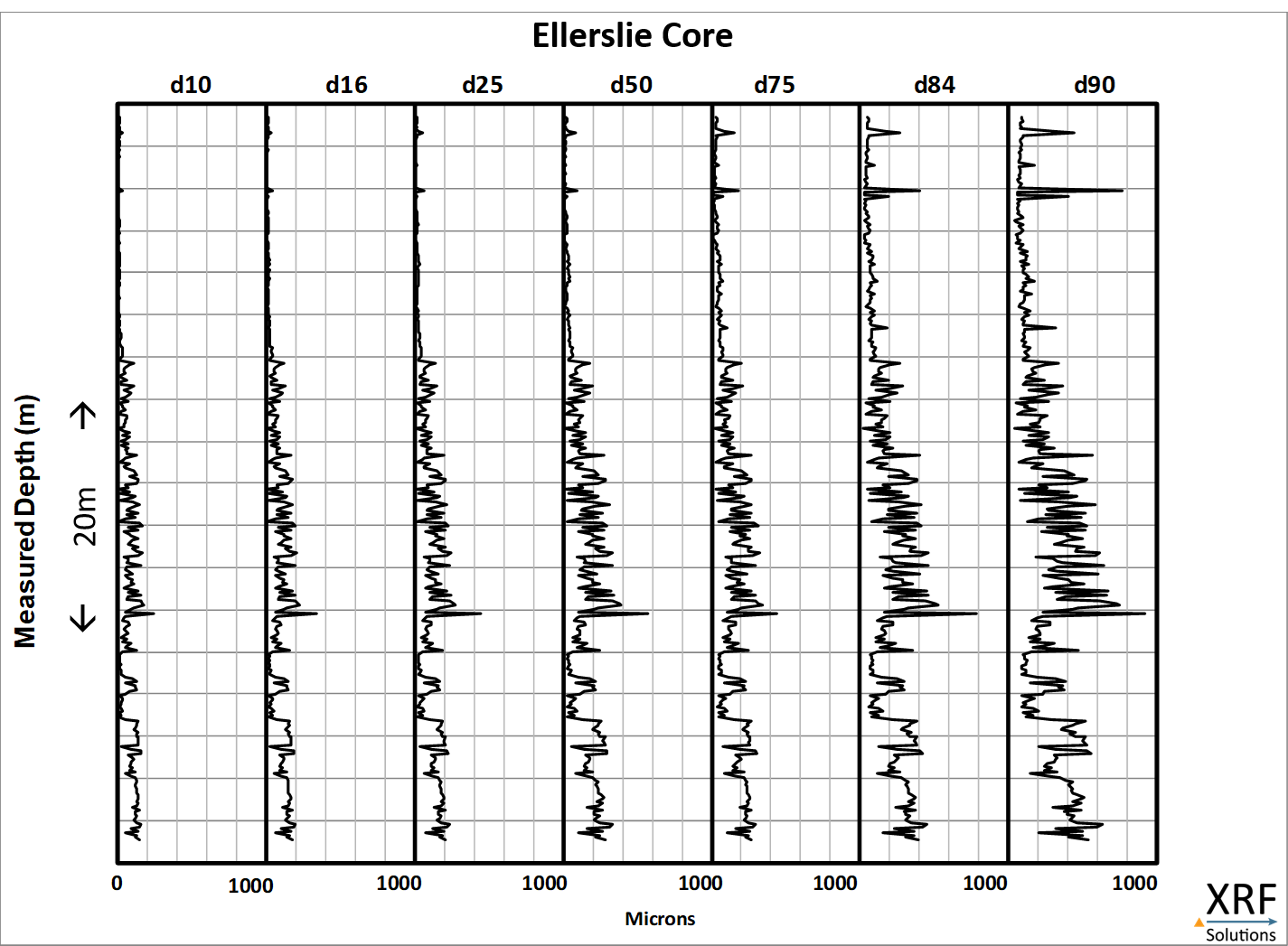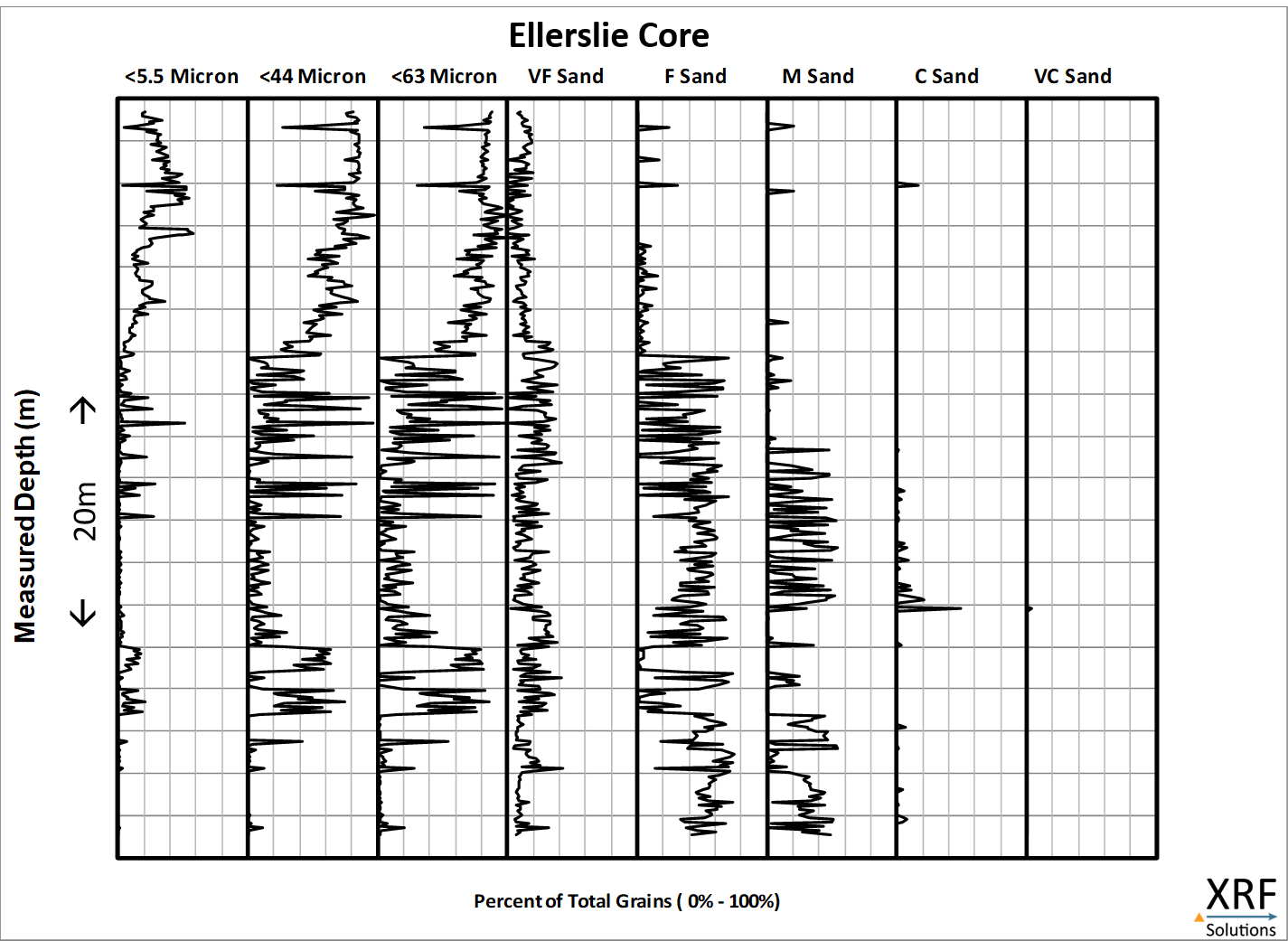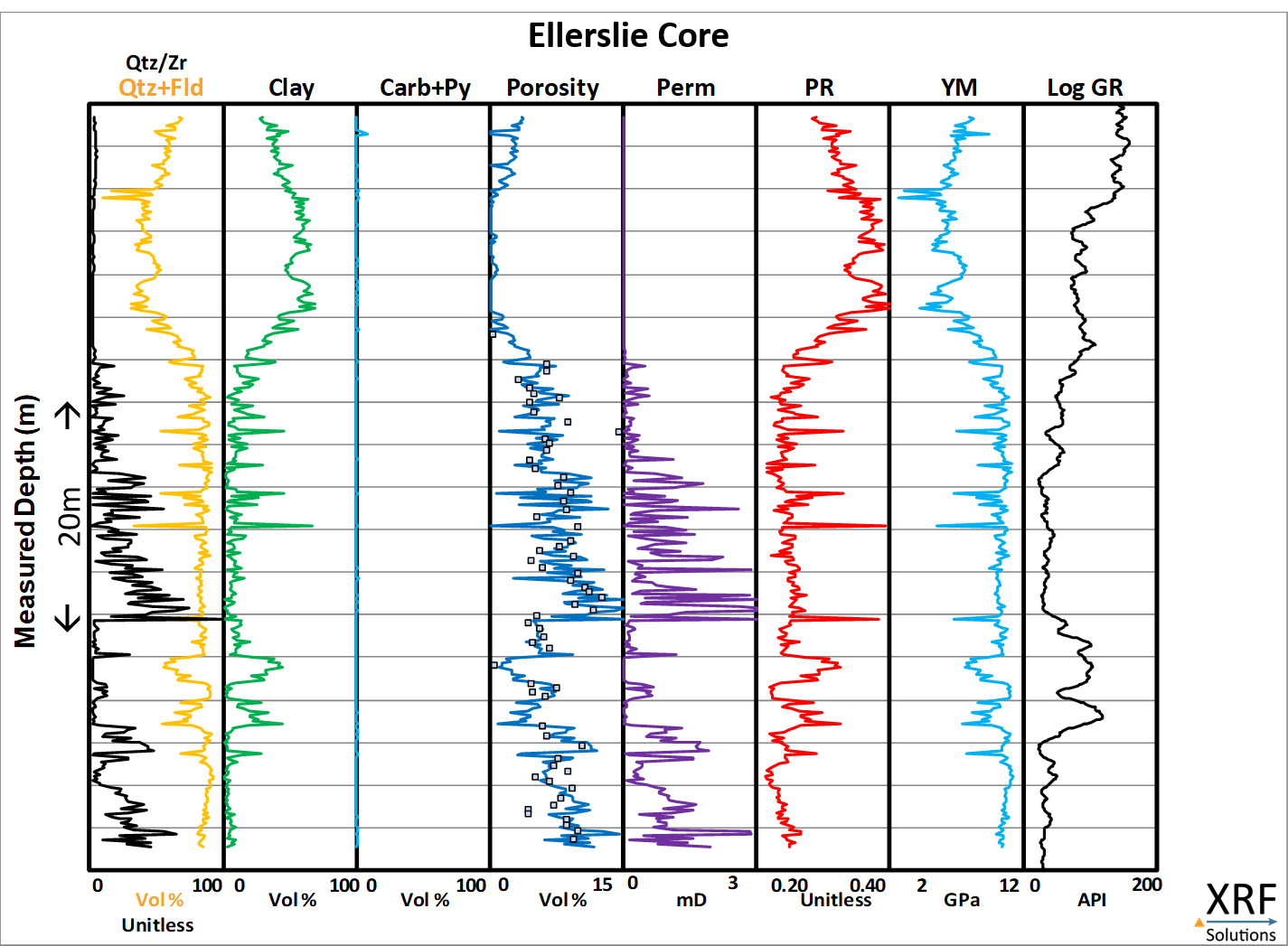Conventional Core
Spectral Gamma
XRF analysis directly measures the elemental concentrations of potassium(K), uranium(U), and thorium(Th) in a given rock sample. These amounts are then converted to a synthetic total gamma (XRF GR). Wireline and MWD tools measure natural gamma rays from a volume of rock in-situ, then back calculate how much K, U and Th are present. By comparing the results of down hole readings with XRF gamma, the cuttings or core can be depth shifted to their correct locations of origin. In horizontal wells, the XRF can provide a spectral gamma from drill cuttings to compliment MWD, and potentially identify if a downhole gamma tool has malfunctioned.
Mineralogy
Most geoscientists and engineers that we work with are not familiar with elemental data. The use is generally limited to stratigraphic correlation. However, there is a significant body of data that, if converted to more familiar and more pertinent forms, provide a wealth of information. Reservoir properties are generally a function of the mineralogy and fabric of the rock, not simply the elemental composition. Determination of the mineralogy from the elemental data provides the user with a much more powerful tool. We employ the principles of mineralogy phase theory to construct normative mineral algorithms. Qtz/Zr is used as a proxy for chert or quartz cement.
Clay Mineralogy
XRF clay mineralogy shows changes in clay composition. Not all shale is the same, highlighted in blue is what we characterize as a “cold shale” which has a high kaolinite content, and is hidden from the gamma. Highlighted in red is what we characterize as a “hot sand” which has a high gamma relative to clay content. “Hot sand” is due to heavy mineral concentrations which XRF can detect.
Particle Size Distribution
Mineralogy and trace element chemistry are used to model particle size distribution (PSD). Sands with more heavy minerals are finer grained. PSD shows changes in grain size within quartz rich sands and can help to identify sand on sand contacts. XRF PSD compares favorably to Laser PSD reference data. XRF PSD is used to estimate permeability through a variation of Berg’s model (Berg, 1970).
Grain Size
Grain size can be estimated as a function the particle size distribution by binning the PSD data. Sands with a higher Qtz/Zr ratio (chert) are coarser grained.
Reservoir Properties
The most important factors for proper evaluation of the target reservoir are gathered into one log suite. The key factors selected for this log suite are detrital framework components, total clay, total carbonate, mechanical properties, porosity, permeability, Qtz/Zr and TOC. These are displayed along with gamma wireline log data. These properties aid in the location of zones with the best reservoir properties. The parameters displayed in the reservoir quality log suite are determined from the proprietary phase theory and semi-empirical specific mineral interaction models. Individual points overlaying curves are reference lab data.
